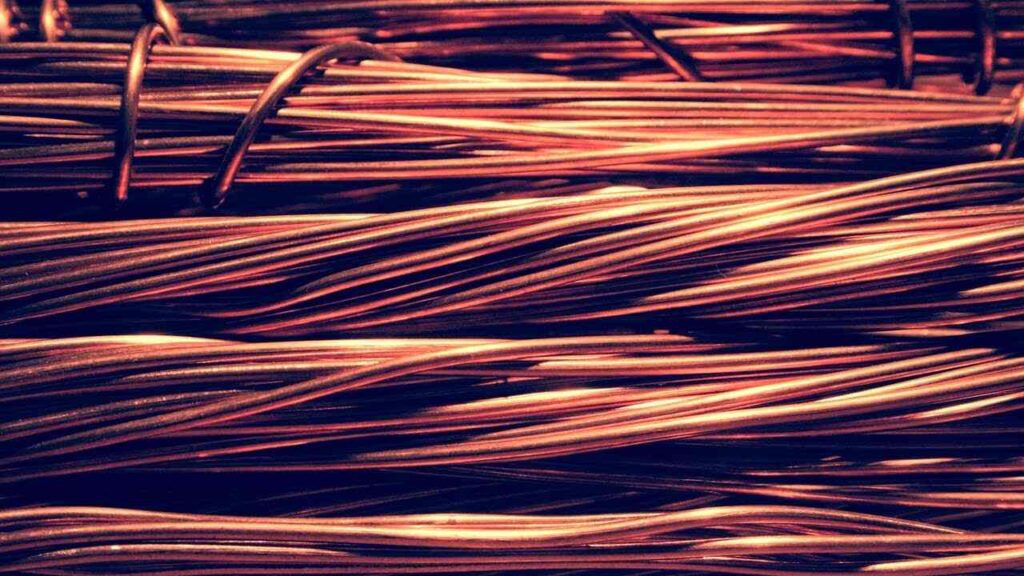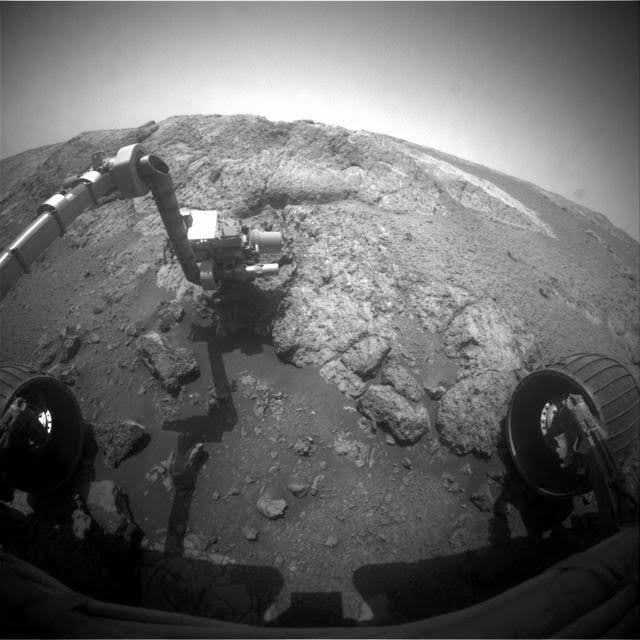Copper is a crucial metal on Earth, used mainly in electrical wiring and industrial applications. But, as humanity sets its sights on space exploration and potential colonization, the demand for copper will not diminish. In fact, it will become even more critical.
Unlike some other metals, copper cannot easily be substituted in many of its essential functions, making it one of the key materials that must be sourced beyond Earth. However, the challenges of obtaining copper in space are substantial, as it is not as readily available as iron or nickel in many celestial bodies. So, understanding where copper can be found, how it forms in space, and the best methods to extract it will be crucial for future space missions.
The Role of Copper in Space Exploration

First things first, why do we need copper for space exploration? Well, copper plays a fundamental role in space technology and infrastructure. It is widely used for electrical wiring, thermal management, and electronic systems, all of which are essential for spacecraft, space stations, and planetary bases.
Its high thermal conductivity makes it invaluable for regulating temperature in extreme space environments, ensuring that equipment does not overheat or freeze. Additionally, copper circuits are integral components in communication systems, power transmission, and scientific instruments. One of the key reasons copper is irreplaceable is that its unique combination of electrical and thermal properties cannot be easily replicated with other metals.
While silver and gold offer similar conductivity, they are much rarer and far more expensive, which makes them impractical for large-scale use in space. Aluminum, another potential alternative, does not match copper’s efficiency in certain applications and can degrade more quickly in extreme conditions.
Without a reliable source of copper in space, future space habitats, potential Lunar and Martian bases, and long-term deep-space missions would face significant challenges in maintaining power, communication, and essential life-support systems. This makes it a key priority to try to locate and extract copper from extraterrestrial sources.
Where Can Copper Be Found in Space?
While copper is not as abundant in space as iron or nickel, it does exist in various celestial bodies. However, its distribution varies, and the feasibility of extracting it depends on how it is incorporated into different geological structures.
Asteroids Are a Potential Source of Copper
Asteroids are known to contain significant amounts of iron, nickel, cobalt, and copper, particularly in S-type asteroids, which are rich in metal-bearing minerals. Studies on ordinary chondrites, a type of meteorite originating from S-type asteroids, suggest that these bodies contain 70–100 ppm of copper in bulk form.
However, the majority of this copper is trapped within Fe-Ni alloys, making direct extraction difficult without extensive chemical processing. A more promising avenue for obtaining copper from asteroids is through shock-darkened zones – regions that have been subjected to intense impact events. These impacts cause localized heating, leading to the exsolution of copper from Fe-Ni alloys, forming native copper grains.
These grains, which can contain up to 50 ppm of copper, could potentially be extracted more easily through mechanical processing methods, rather than requiring extensive chemical leaching. This suggests that specific regions of asteroids, particularly those that have experienced significant collisional history, may hold more accessible copper reserves.
Copper on the Moon
Unlike asteroids, the Moon is not expected to be a significant source of copper. The Moon’s geological history lacks the necessary conditions, such as plate tectonics and hydrothermal activity, to concentrate copper into economically viable deposits. While some traces of copper might exist within lunar regolith, the concentrations are likely too low to justify large-scale mining operations. As a result, the Moon is not considered a viable source for copper extraction.
Copper on Mars – The Best Candidate

On the other hand, among all celestial bodies in near-Earth space, Mars presents the most promising opportunity for copper extraction. Unlike the Moon or asteroids, Mars has undergone a complex geological history, including volcanism, plate tectonics, and hydrothermal activity – all of which are key processes in the formation of copper-rich deposits on Earth.
These geological processes likely led to the formation of copper deposits within the Martian crust, making it the most feasible location for in situ copper mining. Martian exploration missions have already identified hematite-rich regions, which could be associated with hydrothermal mineralization processes similar to those that produce copper ore on Earth.
Additionally, native copper grains may exist in Martian rock formations, potentially allowing for mechanical extraction rather than intensive chemical refining. If confirmed, these deposits could supply amounts of copper sufficient to support future space missions and potential Martian settlements.
Extracting Copper in Space

While the presence of copper in space is promising, its extraction presents significant challenges. Unlike on Earth, where copper mining relies on extensive ore processing techniques, space mining must be efficient, low-energy, and minimally invasive.
Some of the key challenges include:
- Ore concentration: Copper is often mixed with other metals, requiring selective extraction methods, which may be challenging to develop and scale in space environments.
- Microgravity effects: Traditional mining equipment may not function effectively in a space microgravity environment, requiring the development of specialized tools that can operate under low-gravity conditions.
- Limited infrastructure: Early space missions will lack the heavy machinery used in Earth-based mining operations, making initial extraction efforts dependent on lightweight, modular mining solutions.
- Resource transport: Moving extracted copper to processing facilities or to locations where it is needed poses logistical difficulties, requiring efficient transportation methods that minimize fuel consumption and payload constraints.
Potential Extraction Methods

To address these challenges, researchers are exploring innovative methods for space-based copper extraction, including:
- Mechanical Separation: Since native copper grains can form in shock-darkened zones of asteroids, simple mechanical processing, such as crushing and sorting, could be an effective way to extract copper without the need for complex chemical processes. This method could be particularly beneficial in environments where chemical leaching is impractical.
- Magnetic and Density Separation: Because solid copper has different magnetic and density properties compared to Fe-Ni alloys, separation techniques that exploit these differences could be used to isolate copper efficiently. This approach would allow for non-invasive extraction while preserving the surrounding material for further use.
- Electrolysis of Regolith: In the case of Martian or lunar regolith, molten salt electrolysis could be used to extract elemental copper, separating it from other materials while also producing useful byproducts such as oxygen. This dual-purpose method could be essential for self-sustaining space colonies.
- Biomining Techniques: Some research suggests that microbes could be used to leach copper from ore in space, reducing the need for harsh chemicals and high-energy processing. This approach, while still in its experimental phase, has the potential to create a low-impact and energy-efficient method of extracting copper in extraterrestrial environments.
We need to tackle these challenges and develop smart, sustainable ways to extract copper in space. This will be crucial for making space mining of copper a practical reality. Future missions must carefully evaluate where copper is available and how best to extract it in a way that is both efficient and feasible.
By identifying the most promising sources and refining innovative mining techniques, space exploration efforts can secure a steady supply of this essential metal for various applications, from structural components to advanced electronics.
Is There a Future for Copper Mining in Space?
As space exploration advances, the need for sustainable resource extraction becomes more urgent. Copper, an essential material for electrical and thermal applications, will play a crucial role in powering space habitats, spacecraft, and communication systems. While S-type asteroids and Martian deposits show promise as potential sources, the feasibility of copper mining in space depends on developing efficient and scalable extraction methods.
The key challenge lies in accessibility. Most copper in asteroids is locked within Fe-Ni alloys, requiring extensive processing, while Martian deposits remain largely unverified. However, research suggests that shock-darkened asteroid regions could contain native copper grains, which are easier to extract mechanically. Similarly, Mars’ volcanic and hydrothermal history increases the likelihood of concentrated copper deposits, making it the best long-term candidate for large-scale extraction.
For copper mining in space to become a reality, future missions must focus on detailed resource mapping, low-energy extraction techniques, and on-site processing solutions that minimize reliance on Earth-based supply chains. If these challenges are met, copper could become one of the first metals mined beyond Earth, supporting the infrastructure needed for long-term human expansion into space.